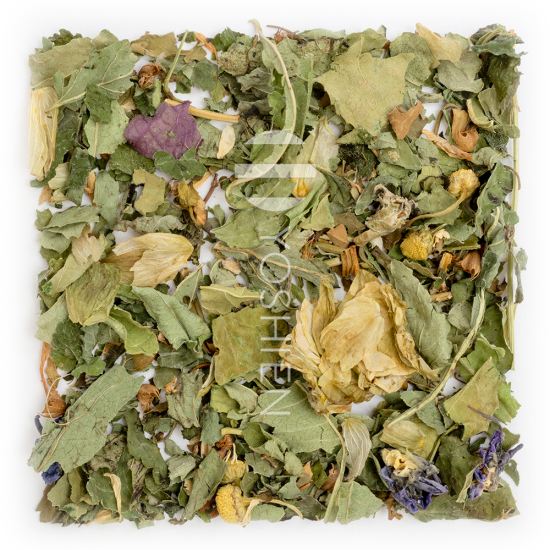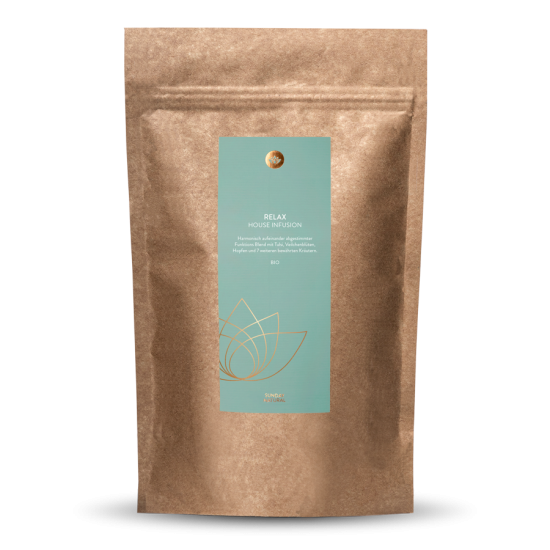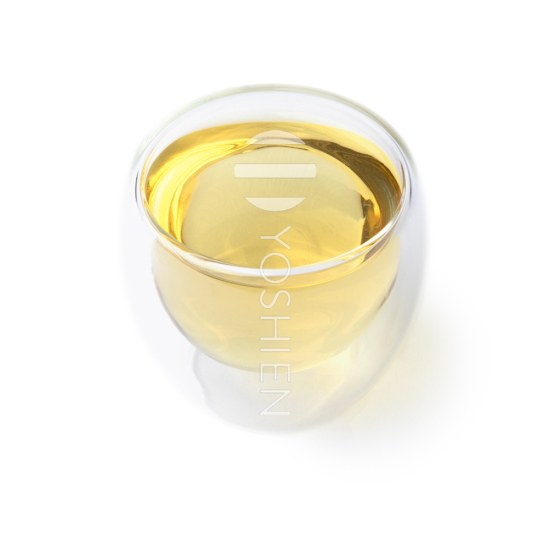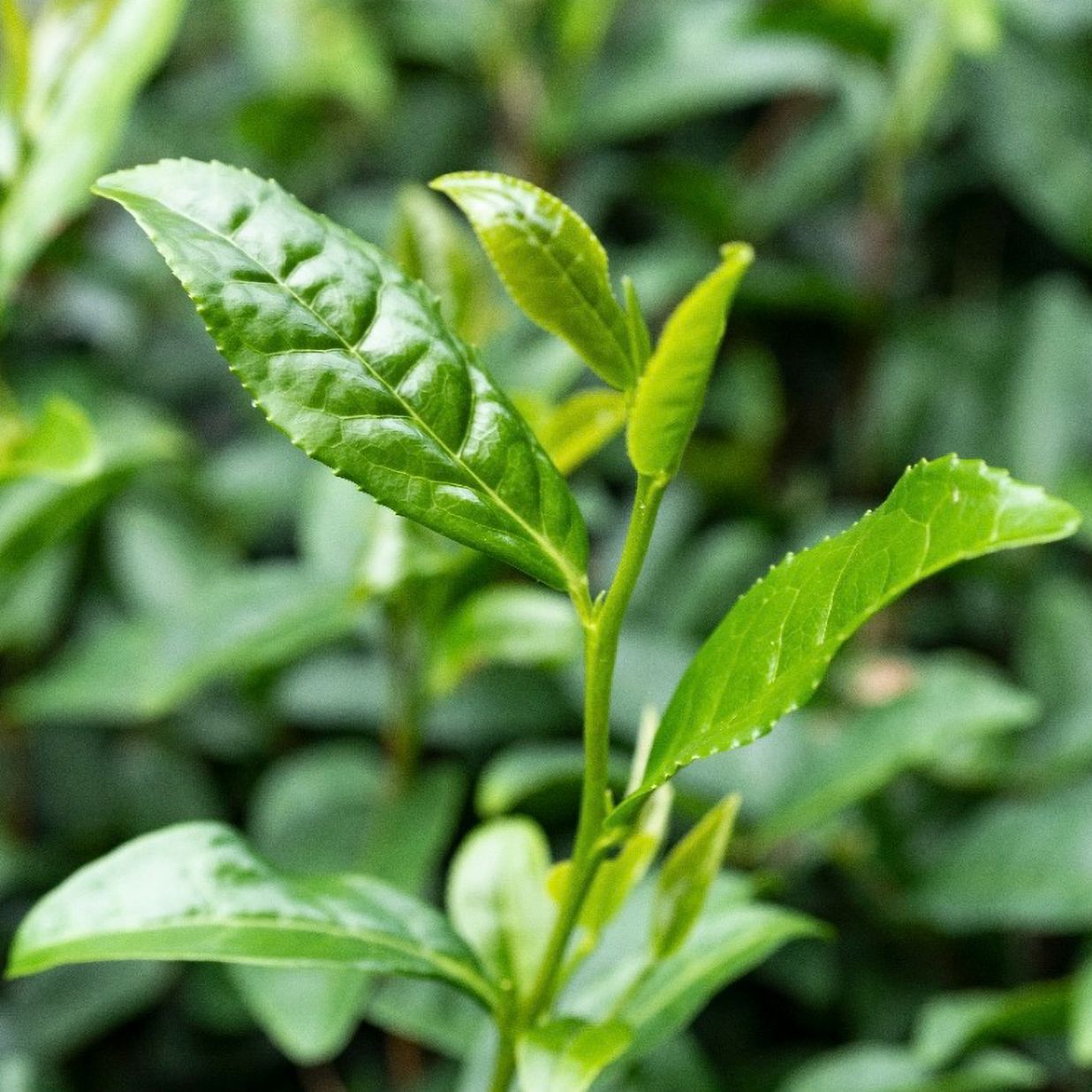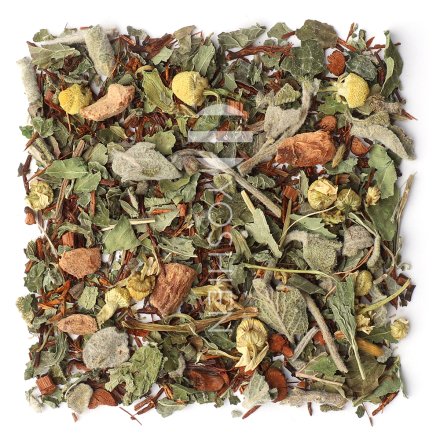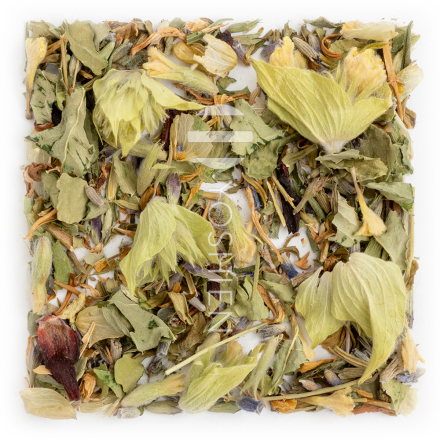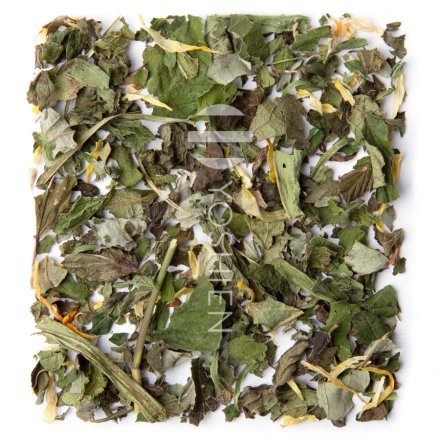LEMON BALM
Lemon balm (Melissa officinalis) is originally a plant native to Southern Europe. Like many herbs from the south, it was first cultivated in monastic gardens and gradually spread across the whole of Europe. This perennial plant begins to sprout from the ground in March and can grow up to 70 cm tall by July, easily recognised by its distinctive fragrance. Due to its wide range of uses, it became a popular aromatic herb throughout Europe early on. In the Middle Ages, it was grown in every monastery garden, as it was considered indispensible.
ST JOHN'S WORT
This high-quality St John's wort comes from the Olympus Mountains. It is cultivated directly on Mount Olympus, the mythical seat of the ancient Greek gods. It is grown in untouched nature on wild meadows, using knowledge passed down through generations.
CAMOMILE
Camomile (Matricaria chamomilla L.) is one of the most well-known native plants and has been a staple of herbal medicine for centuries. With human help, camomile has spread across nearly the entire globe, with the exception of the African continent. Camomile blossoms contain a valuable combination of various plant compounds, which are used in a wide range of applications.
PASSIONFLOWER HERB
The plant Passiflora incarnata originates from Central and South America. It was originally used by the indigenous peoples of the Americas, who used it as a medicine and food source. It has since been highly valued for its relaxing properties, as well as its exceptional beauty and versatility.
TULSI
Tulsi (Ocimum tenuiflorum), also known as Indian basil, belongs to the same plant genus as common basil and is a member of the mint family (Lamiaceae). It originates from tropical and subtropical regions of Asia. Many identify India specifically as the plant’s place of origin, where it has long held a particularly revered status within the cultural and spiritual traditions. Tulsi is especially prominent in Ayurveda, the traditional Indian system of medicine, and is commonly prepared as a tea, either on its own or blended with other ingredients such as ginger. Tulsi is known for its highly aromatic, slightly sweet yet herbaceous flavour, with subtle peppery notes.
VERBENA
Verbena (Verbena triphylla, also known as Aloysia triphylla)
Verbena is known by many names, such as lemon verbena or vervain. Verbena is native to Argentina, Uruguay, and Chile. It was introduced to Europe in the 18th century, where it was also scientifically described as a distinct species for the first time. As a perennial plant, verbena prefers nutrient-rich, well-drained sandy soils in sunny, sheltered locations. In spring, new stems sprout from the root, and from May onwards, the elongated leaves appear in whorls of three. Once mature, they emit a strong lemon scent. In August, small white flowers emerge, each with four tiny petals.
ELECAMPANE
Elecampane (Inula helenium L.) is known for its striking, large yellow flowers and originates from Western Asia. As early as antiquity, this aromatic root was used in cooking and for incense burning.
HOPS
Hops (Humulus lupulus) originally come from Eastern Europe and Western Asia. They thrive in deep, nutrient-rich soils and prefer sheltered locations along woodland edges, fences, and hedgerows — up to altitudes of 1,000 metres. Hops belong to the cannabinoid hemp family (Cannabaceae), and when it comes to the inviolable brewing laws of beer, they are an essential ingredient. Hops were already in use during the time of Hildegard of Bingen (11th century).
VALERIAN
Valerian (Valeriana officinalis) is found across nearly all of Europe. It grows along the banks of streams and ditches, in damp meadows, and at the edges of woodlands. This perennial herbaceous plant regrows each spring and is known for its abundance of active plant compounds, making it suitable for a wide range of uses. Valerian has been valued since antiquity, and the botanical name Valeriana officinalis is derived from the Latin word “valere”, meaning “to be healthy.”
WILD PANSY
The wild pansy (Viola tricolor), also commonly known as field violet, is a valued plant in traditional herbal medicine. It is particularly during the flowering period that the aerial parts of the plant (the flowering herb) are harvested. While the violet spreads almost continuously across the Northern Hemisphere, it can also be found in the Southern Hemisphere, though only in higher altitudes (up to 2700m).



